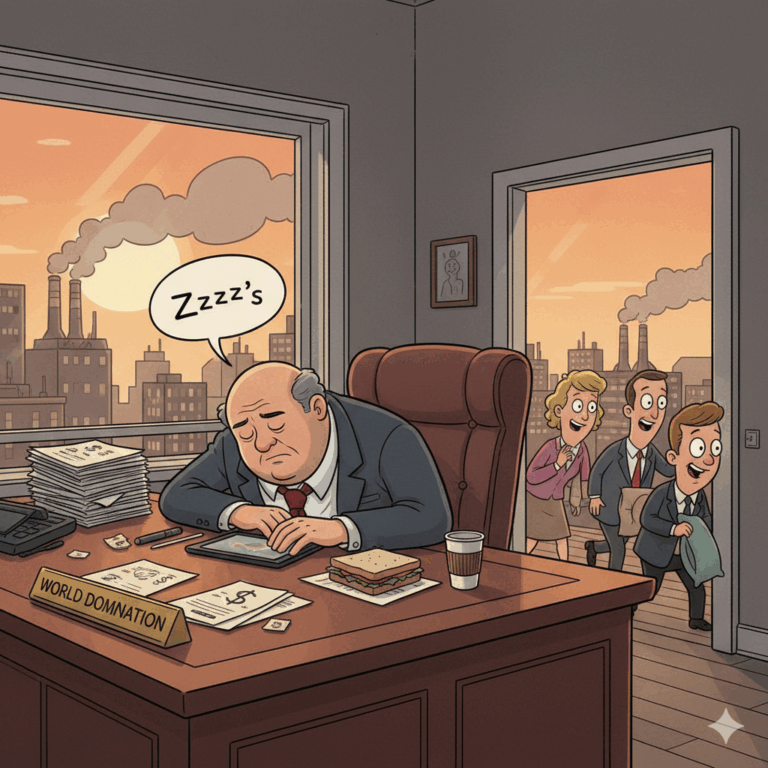Talentsage, Friday 17 October 2025
I read an interesting article recently in City AM on ‘quiet quitting 2.0’ and ‘leadership fatigue’. Forget Gen Z, it said: it is CEOs who are quietly quitting these days, allowing companies to drift for a few quarters or even a few years to extend their perks and pay. Worse yet, the article argues that many boards are complicit, as long as the numbers are acceptable and there are no ugly surprises.
While the prospect of forcing a sitting CEO out and searching for a new one is unlikely to be relished by a board, the risks of doing nothing are at least as great as the risks of termination. Firms with coasting leadership are unlikely to be identifying opportunities and taking every possible action to improve financial performance. Plus, ineffective or bad leadership can have a significant negative impact on employees, leaving them demotivated and unproductive. So how does a board future-proof their organisation against such a risk?
Lacklustre leadership often takes some time to be seen in the numbers. Instead of looking at the balance sheet, look at your employee engagement survey. This is where signs of demotivation emerge quickly in the form of employee perceptions and company culture.
Leaders who have lost their drive are absent from key events and in promoting the current strategy and priorities of the business. Telltale signs might include a lack of vision or direction, ineffective decision making and a lack of transparency and trust. When this happens, everything slows down and quality starts to slip.
It is extremely difficult to plan and execute strategies when the chief executive lacks a clear vision. Similarly, it is impossible to create the culture of collaboration needed to move an organisation forward when clear direction is lacking. Understandably, people struggle to work together when they do not know what they are trying to achieve.
Short-term thinking, long-term trouble
Leaders who are not fully engaged are unlikely to be thinking about the long-term prospects of the company.
Ultimately, any lack of long-term thinking leads to ineffective decision making, which can have serious ramifications. Boards that allow CEOs to consistently make poor decisions risk not just the reputation of the company and a dip in organisational performance, but potentially the complete collapse of their organisation.
Disengaged leaders often lack transparency and this has a negative knock-on effect on trust. Leaders who fail to build trust with their team, thereby creating a culture of suspicion and fear, are likely to see demotivated employees who are disengaging from their work and ultimately the organisation. They might also fail to develop and nurture talent, running the risk that employees looking to grow or develop might also disengage or quit altogether, with obvious implications for the company and its bottom line.
Although past muscle memory will keep an organisation functioning for a while, by the time bad financial news starts to reach the boardroom, significant damage is already done.
To avoid this kind of long-term damage, the key is to catch it early before the culture starts to reflect lack of focus. The effective board monitors culture through tools such as the employee engagement survey and exit interviews.
More important, however, is the need for CEOs to have KPIs for developing the culture of the business, in addition to the more traditional numerical KPIs like sales and profitability.
Some companies, such as Microsoft, have done this successfully—diversifying leadership KPIs, focusing on culture as well as financial performance., with share price quadrupling in a five-year window, and employee engagement and customer satisfaction soaring.
Organisational culture is the thing that facilitates performance, and it is highly sensitive to changes in leader behaviours. When Satya Nadella took the reins of Microsoft in February 2014, he was only the third chief executive in the company’s four-decade history. He moved away from the work of his predecessor, adopting a strategy that placed greater emphasis on cloud computing, artificial intelligence and other new technologies. His strategy was underpinned by three leadership principles—create clarity, generate energy and deliver success.
Cultural transformation
Nadella appointed Jean-Philippe Courtois to lead global sales, marketing and operations (GSMO). Courtois, as my colleague Herminia Ibarra highlights in her case study of his work at Microsoft, adopted a growth mindset, seeking to empower employees at every level. Courtois drove a cultural transformation, from a command-and-control structure to one characterised by trust, collaboration and learning. He had great success in supporting employee empowerment, and also introduced a customer-centric approach, with GSMO moving from selling products to co-creating solutions with customers.
Courtois is an example of a leader fully engaged in the success of his company. His journey exemplifies how leaders can drive transformation by modelling the behaviours they wish to see. A CEO who has disengaged is highly unlikely to be modelling the behaviours that organisations need to move forward.
Boards worried their organisation could be suffering from leadership fatigue might wish to ask themselves if their CEO is addressing challenges and obstacles through role modelling, open communication, and targeted initiatives to support the culture of the business. Is there a lack of vision or direction? Are they willing to embrace new opportunities and do they have the curiosity and foresight to do so? Are they ensuring that there is alignment with company strategy? If not, it might be time to consider if they have quietly disengaged and do something about it before long-term damage is done to your organisation.
Schedule a Discovery Chat to find out more on how Randall and the team at TalentSage can help.
